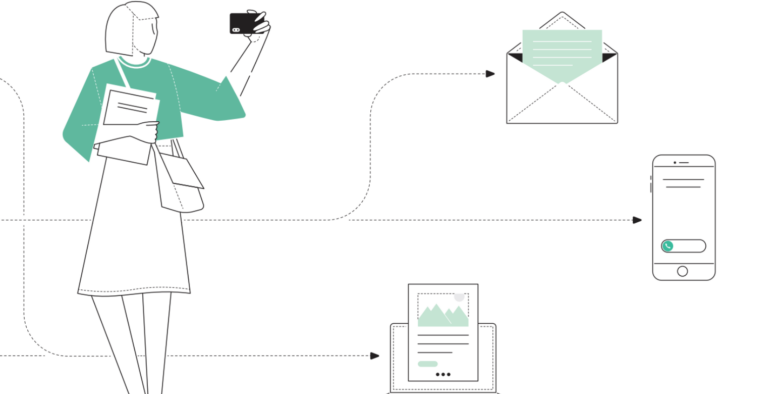Donors Respond After Multi-Channel Messaging

Fundraisers seeking to generate online donations should take advantage of a secret weapon: the standard #10 mailing envelope and its various paper cousins. According to a study from Dallas-based business intelligence firm Data Axle, 29 percent of consumers contributing through an organization’s website do so after being contacted via another channel.
Direct mail is even more powerful when aimed at specific age brackets. According to The New Best Practices for Connecting with Today’s Charitable Donors, direct mail moves donations among 45 percent of donors older than 60, it’s 34 percent of donors between the ages of 45 and 60, then 26 percent of 30- to 44-year-olds, and only 20 percent of 18- to 29-year-olds.
Curiously, direct mail was not cited as the most-preferred outreach channel. Just fewer than half (48 percent) of those surveyed for the study indicated email as their channel of choice, followed by direct mail (21 percent), social media (17 percent), text messaging (eight percent) and phone calls (two percent).
“Today’s donors want to give on their terms—and those terms are more varied than ever,” said Data Axle Nonprofit Solutions President Stephanie Ceruolo via a statement. Fundraisers “can’t afford to choose one or two channels. They need to get smarter and more data-driven when building their donor acquisition and fundraising initiatives, and leverage the full spectrum of channels according to the preference of each individual,” according to Ceruolo.
Marketers are more likely to focus on actual cash returns than consumer replies, however. If the numbers show mail seems to be moving donations—perhaps because a well-designed mail piece can help create a lasting impression when coupled with other touches—marketers will disregard stated resistance to mail (such as for environmental waste reasons).
Access to MinistryWatch content is free. However, we hope you will support our work with your prayers and financial gifts. To make a donation, click here.
Few truths are universal, however, and channel choice changes between age and gender demographics. The study also found men are more likely to respond to a phone call than women (14 percent versus nine percent) and less likely to click through an email solicitation (18 percent for men, 22 percent for women). Direct mail is stronger among women, with 24 percent of them receptive to pitches via this channel versus 18 percent of men.
“Some of the newer nonprofits may lean too heavily on digital media, while older ones may avoid digital channels entirely,” said Data Axle Chairman and CEO Michael Laccarino in a statement. “This survey shows the importance of using every channel in order to reach donors in the most effective way, informed by their demographic and psychographic attributes.”
Channel preference isn’t the only demographic differentiator when it comes to donations. While slightly more than one third (36 percent) of donors make sustaining monthly contributions to at least one charity, that tendency is much more pronounced among younger consumers, with 41 percent of those aged 30 to 44 and 48 percent of those between the ages of 18 and 29 doing so.
Younger donors are also surprisingly open to setting up legacy contributions in their wills. More than one in five (21 percent) of those between the ages of 18 and 29 have already done so, as have 17 percent of 30- to 44-year-olds. In contrast, only ten percent of donors between the ages of 45 and 60, and 16 percent of those over 60, have included these provisions in their wills.
Data Axle based its finding in part on a survey of more than 1,200 Americans who had donated to a charity within the last six months. Detailed findings from Data Axle are available here: https://bit.ly/3nW73bO
This article first ran at The NonProfit Times. It is reprinted with permission.



